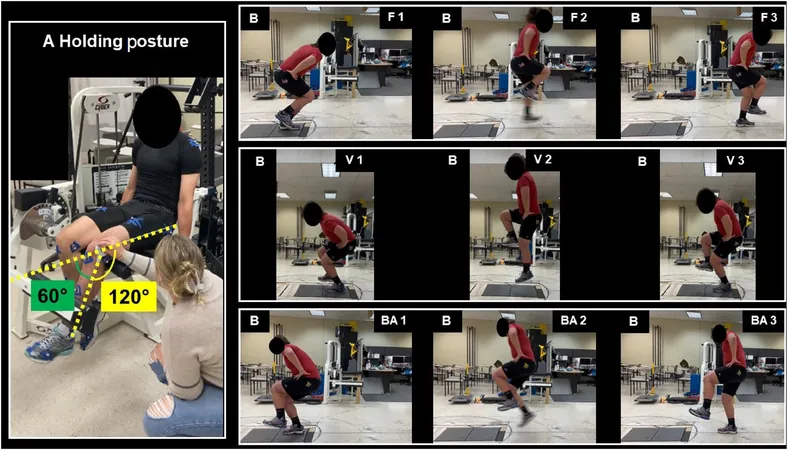
Breaking News: Backward Hopping Could Revolutionize ACL Recovery Methods!
2024-09-16
Introduction
In a surprising twist in sports medicine, researchers at the University of Kansas have discovered that backward hopping might be the keys to unlocking faster and more accurate recovery assessments for athletes post-ACL reconstruction. Can this simple action change the game for rehabilitation?
Traditional Recovery Measures
The traditional measures for assessing recovery, like forward hopping distance, have been questioned for their accuracy. Preliminary research indicates that the distance covered in backward hops could provide a clearer picture of strength, force, and overall joint health, essential components for any athlete eager to return to their sport. While it may seem unconventional, this method doesn’t require specialized equipment—just a marked floor and a tape measure.
Research Insights
Yu Song, the lead researcher and assistant professor at KU, emphasized the importance of finding easy and precise assessment methods. "We want to offer practitioners a straightforward tool to evaluate recovery status after an ACL injury," Song explained.
Study Findings
Backward hopping has showcased its unique effectiveness. In a study involving participants without prior ACL injuries, researchers simulated a reconstructed ACL by making subjects hop backward after inducing muscle fatigue in one leg. Sensors on force plates revealed that participants exhibited a remarkable drop in performance, achieving only about 84% of their pre-fatigue hopping force and distance in backward hops—dramatically less than the over 90% recovery seen in forward and vertical jumps.
Biomechanics of Backward Hopping
What makes this discovery even more exciting is the biomechanics involved. Song noted that the knee plays a significantly greater role during backward hopping compared to forward motions—approximately double the work! This unique dynamic allows for greater insights into knee function and quadriceps strength, suggesting backward hopping could surpass traditional methods in measuring recovery progress.
Future Implications
The implications of these findings extend far beyond academia. The research team, which includes co-authors from respected institutions, is preparing to delve deeper into trials with actual ACL recovery patients. This could lead to a game-changing validation of backward hopping as a superior assessment tool in the rehabilitation process.
Conclusion
As the world of sports continues to evolve and embrace innovative recovery techniques, we may soon see backward hopping taking center stage in rehabilitation protocols. Athletes recovering from ACL injuries may have finally found a secret weapon for returning to peak performance faster and safer than ever before.
Stay Tuned
Stay tuned as further studies unfold, revealing how this unconventional method might pave the way for improved recovery techniques in sports medicine. Don't miss out on the next big development in ACL recovery!



 Brasil (PT)
Brasil (PT)
 Canada (EN)
Canada (EN)
 Chile (ES)
Chile (ES)
 España (ES)
España (ES)
 France (FR)
France (FR)
 Hong Kong (EN)
Hong Kong (EN)
 Italia (IT)
Italia (IT)
 日本 (JA)
日本 (JA)
 Magyarország (HU)
Magyarország (HU)
 Norge (NO)
Norge (NO)
 Polska (PL)
Polska (PL)
 Schweiz (DE)
Schweiz (DE)
 Singapore (EN)
Singapore (EN)
 Sverige (SV)
Sverige (SV)
 Suomi (FI)
Suomi (FI)
 Türkiye (TR)
Türkiye (TR)